Spiders live all around the globe. There are more than 50,000 species identified, with hundreds being discovered regularly. Afghanistan is one of the many areas in the world that hosts a variety of spiders, and while some are venomous, most are harmless. Dry and mountainous regions are what Afghanistan is known for, but the country is home to diverse habitats like marshes, valleys, savannas, and freshwater sources like streams. Spiders are very adaptable and are found in a variety of places. This article will cover nine terrifying spiders found in Afghanistan and everything you will want to know about them.
1. Jumping Spiders (Evarcha darinurica)
There are over 5,000 species within the jumping spider family, also called Saltidicidae. One jumping spider species is Evarcha darinurica, one of many jumping spiders found in Afghanistan. Spiders within the Evarcha genus live in Europe, Asia, and Africa. These spiders have a furry appearance and a sturdy body and live in damp vegetated areas.
Jumping spiders are among the least terrifying spiders; some may even consider them cute. They are one of the most popular pets due to their activity and small size. The eyes sight of jumping spiders are one of the best among all spiders, and they have excellent binocular vision.
They use their excellent eyesight to stalk prey, and they hunt and pounce on their meals like a cat. Jumping spiders are harmless but may regularly make their way indoors due to their agility. If you spot a jumping spider, then it has also likely spotted you, and sometimes they follow your movements.
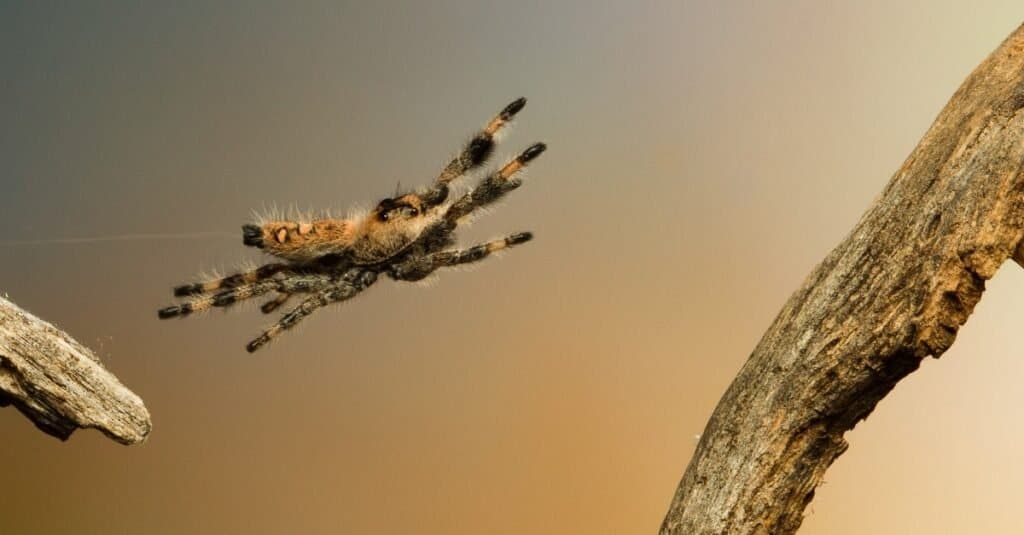
Jumping spiders hunt by leaping onto their prey from great distances.
©iStock.com/memcockers
2. Mouse Spider (Scotophaeus blackwalli)
The mouse spider is a small species, ranging from 0.35 to 0.47 inches in size. Mouse spiders are members of the Gnaphosidae family, which contains over 2,000 species and is the 7th largest spider family in the world. While their size may not be terrifying, you may regularly come in contact with them since they often make their way indoors.
Besides Afghanistan, the mouse spider’s range reaches Europe, North America, Peru, Hawaii, and other regions.
While Afghanistan’s mouse spider holds a similar common name as the “red-headed mouse spider,” this species is harmless. They have brown-colored legs and a greyish abdomen. Silky hairs cover their body, which looks similar to a mouse.
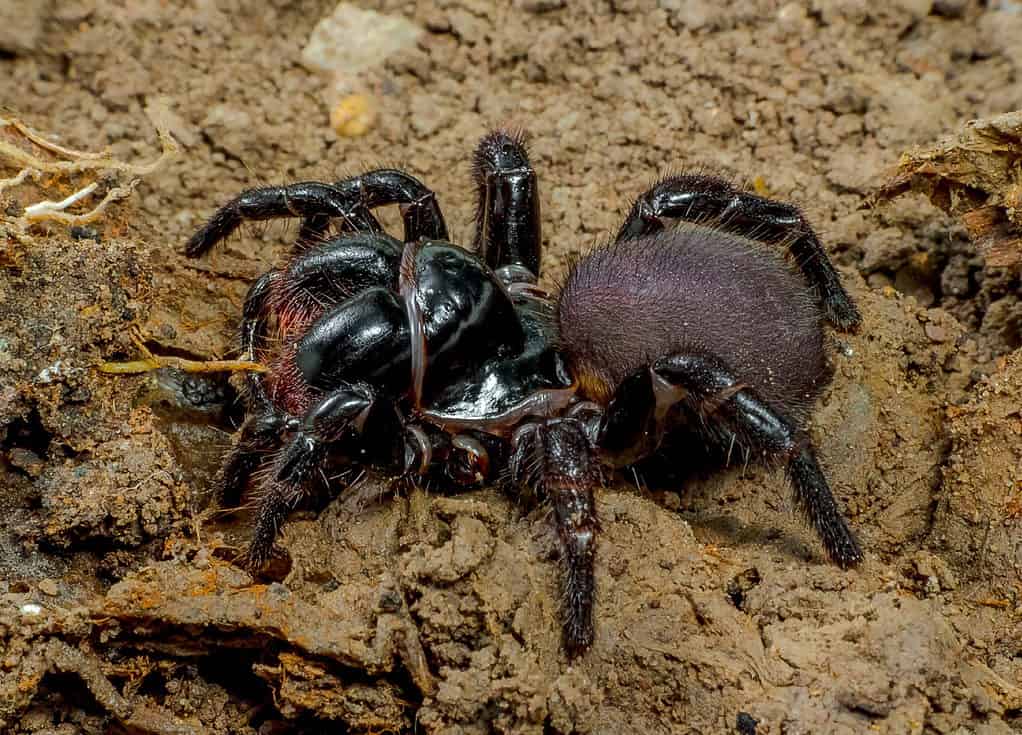
While Afghanistan’s mouse spider holds a similar common name as the “red-headed mouse spider,” this species is harmless.
©Robertwhyteus, CC BY 4.0 <https://creativecommons.org/licenses/by/4.0>, via Wikimedia Commons – License
3. Chinese Wolf Spiders (Lycosa signoriensis)
The Chinese wolf spider is named after their range in China, but this spider is also found in Afghanistan. This species is a member of the Lycosidae wolf spider family and is one of the many types that live in Afghanistan. Large spiders are always terrifying, and when fully grown, Chinese wolf spiders typically have a size between 1.1 to 1.57 inches.
Wolf spiders are named after their wolf-like hunting abilities, as they quickly pounce on prey that gets close. They do not use silk to trap potential meals but ambush them using their insane speed. Chinese wolf spiders have excellent eyesight, with two large eyes giving them great binocular vision. They are not dangerous but, if sighted, may frighten you.
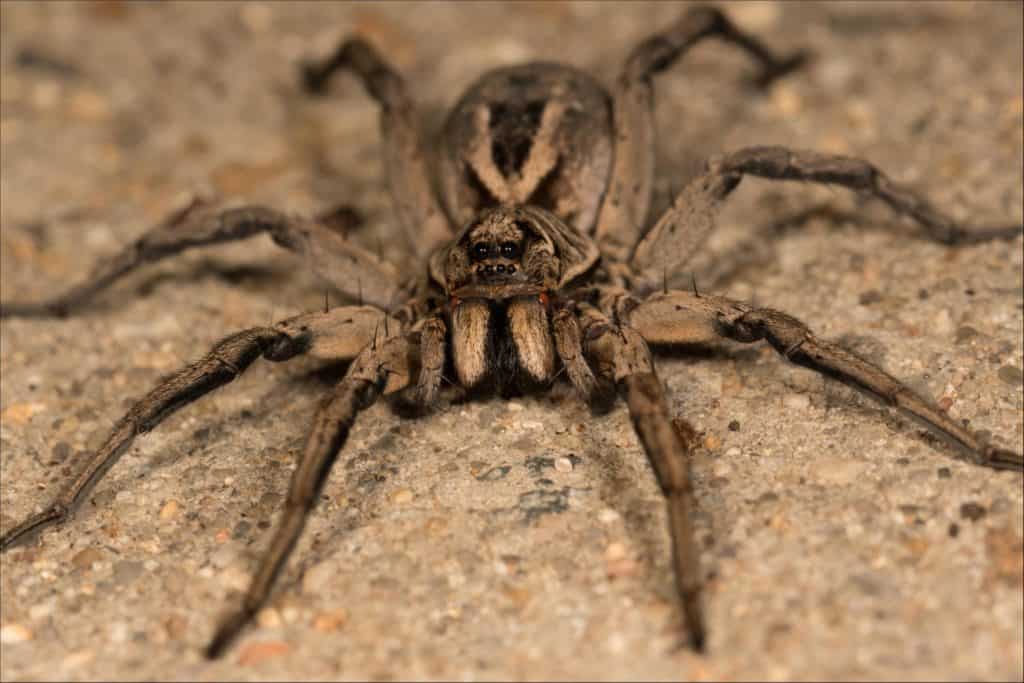
Wolf spiders are named after their wolf-like hunting abilities, as they quickly pounce on prey that gets close.
©Katarina Christenson/Shutterstock.com
4. Daddy Long-leg Spiders (Artema magna)
Daddy long-leg spiders live all around the globe. Artema magna is one of the many daddy long-leg spiders in Afghanistan. These spiders are named after their long and nimble legs. They are very hardy and can live indoors or outdoors most of the year. Also called “cellar spiders,” since they are often found in cellars or basements, these spiders build a messy tangle of webs to live in.
Cellar spiders can also live together in large colonies. They are beneficial because they can help deter dangerous spiders like widow spiders or feed on pest insects. Daddy long-leg spiders should not be confused with “harvestmen”, which also hold the name “daddy long leg.”
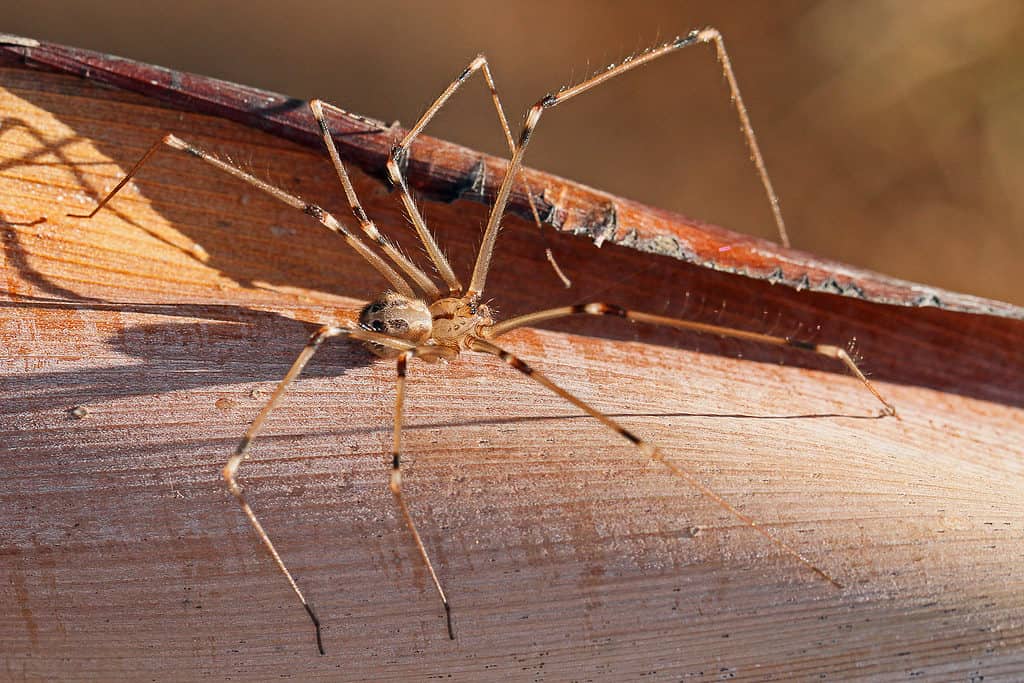
is one of the many daddy long-leg spiders in Afghanistan.
©Eugene Troskie/Shutterstock.com
5. Running Crab Spiders (Philodromomus populicola)
Named after their speed, you can spot running crab spiders in Afghanistan, but they have an extensive worldwide range. Running crab spiders belong to the Philodromidae family, which contains more than 500 species. They were once put in the Thomisidae crab spider family but are now classified as their own family.
Philodromous populicola is one type of running crab spider found in Afghanistan. They adapt well to the country’s diverse ecosystem and can live in woodlands, grasslands, and desert habitats. They have long legs that help them chase down prey and feed on small insects. These spiders are usually brown and use their mottled pattern to camouflage into their habitats.

Running crab spiders are usually brown and use their mottled pattern to camouflage into their habitats.
©Vinicius R. Souza/Shutterstock.com
6. Huntsman Spider (Olios sericeus)
The huntsman spider is one of the largest spiders in the world, and there are more than 1,200 species currently discovered. Olios sericeus is one type of huntsman spider that lives in Afghanistan. These spiders belong to the Olios genus, which is the largest genus.
The adept ambush hunting technique this spider uses to catch its prey is how it gets its name. Huntsman spiders have very long legs; their body size is around 0.42 in. Tan is the most common color for huntsman spiders, and they have flattened bodies that help them squeeze into small crevices.
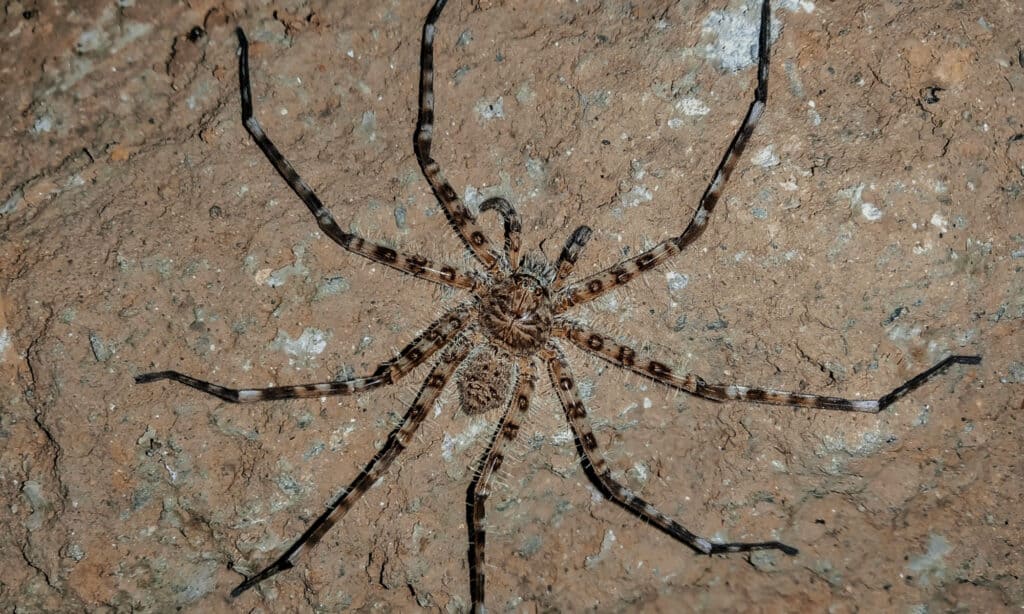
The huntsman spider is one of the largest spiders in the world. They have flattened bodies that help them squeeze into small crevices.
©Nikhil Guhagarkar/Shutterstock.com
7. Brown Widow (Latrodectus geometricus)
Brown widow spiders are believed to be a spider native to southern Africa, but when first described, this species was discovered in South America. The brown widow has grown its range and lives in many areas of the world, including Afghanistan, North America, Australia, Japan, and the Caribbean Islands. These spiders are mainly seen in the warm summer months and build messy webs.
Like other widow spiders, this species is identifiable by the hourglass-shaped marking under its abdomen. They have a mottled brown coloring, with tan legs covered in dark bands. Females have large abdomens, and spindly legs, while males are much smaller.
Brown widow spiders have venom, but their bites are less potent than black widows. Symptoms from their bites include redness and swelling, but their venom does not showcase other symptoms of Latrodectus bites.
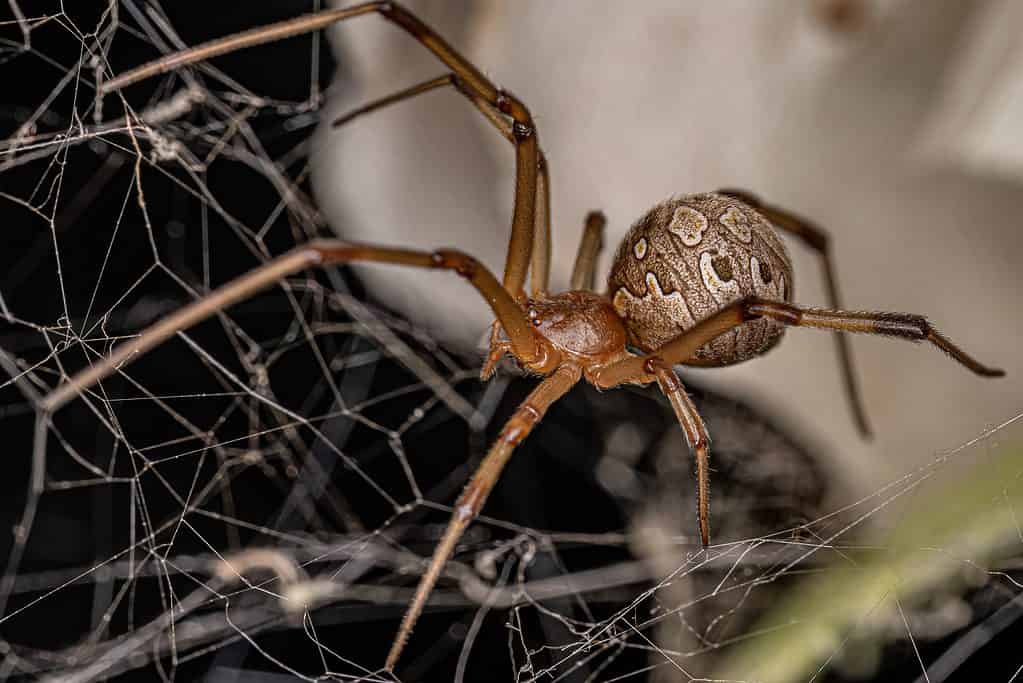
Brown widow spiders have venom, but their bites are less potent than black widows.
©Vinicius R. Souza/Shutterstock.com
8. Middle East Black Tarantula (Chaetopelma olivaceum)
The Middle East black tarantula is a large spider found in Afghanistan, the Middle East, and other regions like Egypt, Sudan, Turkey, and Cyprus. Named after its black coloring, this tarantula has a large body size ranging between 0.98 to 1.98 inches. They are one of the largest spiders in their range and are covered in shiny velvet hairs.
The size of this spider does not make it dangerous to humans. However, if they feel threatened, they may posture with their front legs up, exposing the red coloring near their chelicera. Mainly spotted at night, this species is sometimes seen hunting for insects like roaches. Middle East black tarantulas are quick and aggressively take down their prey. Parasitic wasps are this tarantula’s main predator.

Although impressive, the size of the black tarantula does not make it dangerous to humans.
©Pavaphon Supanantananont/Shutterstock.com
9. Mediterranean Recluse (Loxosceles rufescens)
Spiders in the Sicariidae family are infamous for their venomous necrotic bites and only have six eyes. Recluse spiders belong to this family, which comprises the genus of Loxosceles. A few recluse spiders can be found in Afghanistan, including the Mediterranean recluse.
The Mediterranean recluse is nearly indistinguishable from the brown recluse and is identifiable by the violin marking on its cephalothorax. This spider is tan and has a length of around 0.29 in. This species has no other brown markings and you can identify it by its six eyes paired in two and their violin marking. The Mediterranean recluse is nocturnal and spends its night hunting small insects. They prefer dark and secluded areas to live in.
The bite from recluse spiders is highly venomous and causes redness, pain, blistering, and fever. Seek immediate medical attention if a recluse spider bites you.

The bite from recluse spiders is highly venomous. Seek immediate medical attention if a recluse spider bites you.
©Physics_joe/Shutterstock.com
The photo featured at the top of this post is © iStock.com/Windy Soemara
Thank you for reading! Have some feedback for us? Contact the AZ Animals editorial team.






